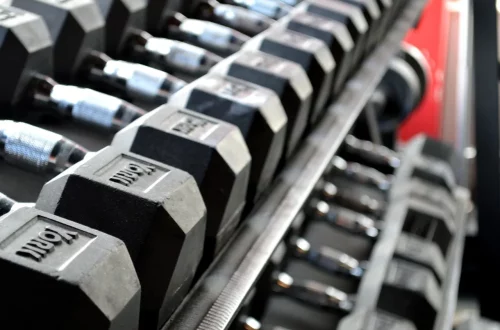
Unlocking the Secrets to Achieving a Ripped X Physique
Achieving a ripped physique is a common goal for many fitness enthusiasts. It symbolizes not just a commitment to physical fitness but also an embodiment of discipline, hard work, and the pursuit of excellence. The journey to sculpting your body into a well-defined form is often seen as a mountain to climb—a challenge filled with obstacles, temptations, and the need for a strategic approach.
A ripped physique requires more than just lifting weights; it demands a comprehensive lifestyle change that encompasses nutrition, exercise, mindset, and recovery. Many individuals desire the aesthetic appeal of a chiseled body, but few understand the nuances involved in reaching that goal. It’s essential to recognize that achieving a ripped look is not an overnight process. It requires patience, consistent effort, and the right knowledge to navigate the complex world of fitness and nutrition.
In an era where misinformation can easily cloud judgment, understanding the fundamental principles of achieving a ripped physique becomes crucial. Whether you’re an experienced athlete or a novice just starting your fitness journey, grasping these concepts can help you unlock the secrets to a healthier, more dynamic body. The following sections will delve into the essential components that contribute to sculpting a ripped physique, enabling you to take informed steps towards your fitness aspirations.
Nutritional Foundations for a Lean Physique
Nutrition stands as the cornerstone of achieving a ripped physique. It’s not merely about what you eat but understanding how different foods impact your body composition, energy levels, and overall health. A balanced diet rich in whole, unprocessed foods is fundamental. This includes lean proteins, healthy fats, complex carbohydrates, and plenty of fruits and vegetables.
Proteins are essential for muscle repair and growth. Integrating high-quality protein sources such as chicken, fish, eggs, and plant-based options like lentils and chickpeas can help you maintain muscle mass while losing fat. Aim for a protein intake that aligns with your fitness goals, typically around 1.2 to 2.2 grams per kilogram of body weight, depending on your activity level.
Healthy fats, found in foods like avocados, nuts, and olive oil, play a crucial role in hormone production and nutrient absorption. They should not be avoided but rather included in moderation to support overall health.
Complex carbohydrates provide the energy necessary for intense workouts. Foods like quinoa, brown rice, and sweet potatoes are excellent sources that release energy slowly, keeping you fueled throughout the day.
In addition to these macronutrients, micronutrients—vitamins and minerals—are vital for optimal body function. They help with recovery, immune function, and energy production. Therefore, incorporating a variety of colorful fruits and vegetables into your meals is key.
Finally, hydration cannot be overlooked. Drinking enough water throughout the day aids digestion, regulates body temperature, and supports overall health. Aim for at least eight glasses of water daily, adjusting based on your activity level and climate.
The Role of Strength Training
Strength training is a fundamental aspect of building a ripped physique. It not only helps in muscle development but also boosts metabolism, allowing your body to burn more calories at rest. Engaging in a well-structured strength training routine that incorporates compound movements can be particularly effective.
Compound exercises, such as squats, deadlifts, bench presses, and rows, engage multiple muscle groups, promoting overall strength and muscular coordination. These movements stimulate greater muscle growth and are time-efficient, making them ideal for those with busy schedules.
To maximize results, focus on progressive overload—gradually increasing the weight, reps, or intensity of your workouts. This principle ensures that your muscles are continually challenged, leading to growth and development.
It’s also essential to implement a balanced training program that includes a mix of push, pull, and leg exercises. This approach not only prevents imbalances but also reduces the risk of injury. Additionally, incorporating rest days into your routine allows muscles to recover and grow stronger.
Furthermore, high-intensity interval training (HIIT) can be an effective complement to strength training. HIIT workouts alternate between intense bursts of exercise and short recovery periods, enhancing cardiovascular fitness and aiding fat loss without sacrificing muscle mass.
Ultimately, consistency is key in your strength training regimen. Establishing a routine that you can stick to long-term will yield the best results. Tracking your progress can also help maintain motivation and identify areas for improvement.
Mental Resilience and Motivation
Achieving a ripped physique is as much a mental challenge as it is a physical one. Mental resilience plays a crucial role in staying committed to your fitness goals, especially during days when motivation wanes. Cultivating the right mindset can significantly influence your workout consistency and dietary choices.
Setting clear, achievable goals can provide direction and purpose. Instead of focusing solely on the end result, break your goals into smaller, manageable milestones. Celebrate these achievements to maintain motivation and reinforce positive behavior.
Visualization techniques can also be beneficial. Imagine yourself reaching your goals, whether it’s fitting into a certain pair of jeans or achieving a personal best in the gym. This mental imagery can strengthen your resolve and make the journey feel more attainable.
Surrounding yourself with a supportive community can enhance your motivation. Engaging with like-minded individuals, whether through fitness classes, online forums, or social media, can provide encouragement and accountability. Sharing your journey with others can also inspire you to stay on track.
Additionally, learning to embrace setbacks is vital. The path to a ripped physique will inevitably have obstacles, whether it’s a missed workout or a dietary slip-up. Instead of allowing these setbacks to derail your progress, view them as opportunities for growth. Reflect on what went wrong and strategize on how to overcome similar challenges in the future.
Practicing mindfulness and stress management techniques can also enhance mental resilience. Activities such as yoga, meditation, or even deep-breathing exercises can help reduce stress, improve focus, and create a positive mindset conducive to achieving your fitness goals.
Recovery: The Unsung Hero
Recovery is often overlooked in the quest for a ripped physique, yet it is a critical component that can make or break your progress. Adequate recovery allows your body to repair itself, adapt to the stress of training, and ultimately grow stronger.
One of the most crucial aspects of recovery is sleep. Quality sleep is essential for muscle repair, hormonal balance, and cognitive function. Aim for 7-9 hours of uninterrupted sleep per night. Establishing a bedtime routine, limiting screen time before bed, and creating a comfortable sleep environment can help improve sleep quality.
Active recovery days are also beneficial. Engaging in low-intensity activities such as walking, cycling, or yoga on rest days helps maintain blood flow to muscles, reducing soreness and promoting recovery without adding significant strain.
Incorporating practices such as stretching or foam rolling can enhance flexibility and alleviate muscle tension. This can improve your performance during workouts and reduce the risk of injury, allowing for more consistent training.
Nutrition plays a vital role in recovery as well. Consuming a balanced post-workout meal with protein and carbohydrates can help replenish glycogen stores and repair muscle tissue. Timing your nutrition around workouts can optimize recovery.
Lastly, listening to your body is paramount. If you feel fatigued, experiencing pain, or notice a decline in performance, it may be a sign that you need more recovery time. Ignoring these signals can lead to overtraining and injuries, hindering your progress.
In conclusion, achieving a ripped physique is a multifaceted journey that requires dedication to nutrition, strength training, mental resilience, and recovery. By understanding and implementing these essential components, you can unlock the secrets to sculpting your body and reaching your fitness aspirations.
**Disclaimer:** This article is for informational purposes only and is not intended as medical advice. Always consult a healthcare professional for any health-related issues or concerns.




